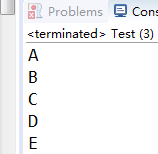迭代器模式(Iterator Pattern)是 Java 编程环境中非常常用的设计模式。
这种模式用于顺序访问集合对象的元素,不需要知道集合对象的底层表示。
package com.ceshi15; public interface Iterator { //前移 public Object previous(); //后移 public Object next(); public boolean hasNext(); //取得第一个元素 public Object first(); }
package com.ceshi15; public interface Collection { public Iterator iterator(); /*取得集合元素*/ public Object get(int i); /*取得集合大小*/ public int size(); }
实现类
package com.ceshi15; public class MyIterator implements Iterator { private Collection collection; private int pos = -1; public MyIterator(Collection collection){ this.collection = collection; } @Override public Object previous() { if(pos > 0){ pos--; } return collection.get(pos); } @Override public Object next() { if(pos<collection.size()-1){ pos++; } return collection.get(pos); } @Override public boolean hasNext() { if(pos<collection.size()-1){ return true; }else{ return false; } } @Override public Object first() { pos = 0; return collection.get(pos); } }
package com.ceshi15; public class MyCollection implements Collection { public String string[] = {"A","B","C","D","E"}; @Override public Iterator iterator() { return new MyIterator(this); } @Override public Object get(int i) { return string[i]; } @Override public int size() { return string.length; } }
package com.ceshi15; public class Test { public static void main(String[] args) { Collection collection = new MyCollection(); Iterator it = collection.iterator(); while(it.hasNext()){ System.out.println(it.next()); } } }

可以模仿java迭代方法的实现。
关键就是定义接口:hasNext, next。
然后通过这种借口写出自己的集合框架